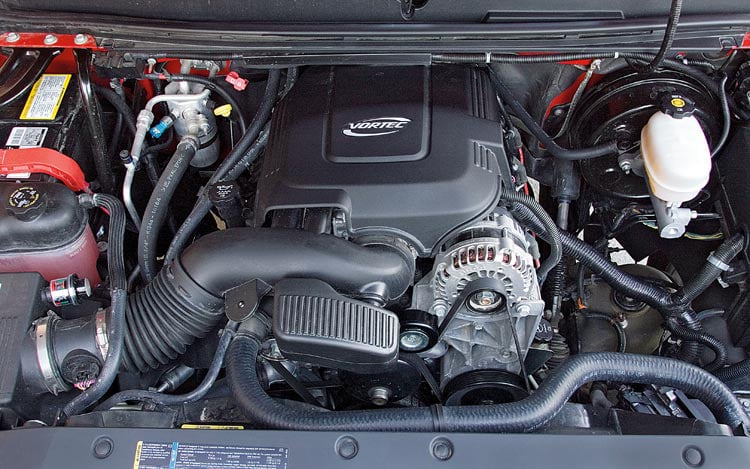1999-2006 Chevy Silverado Brake Line Failure & Routing Diagram

Meet Jake
Jake is a founder of 8020 Media and has been creating automotive content online since 2017. He has been the lead writer for Chevy Trucks and has transformed it from the old and outdated site it was into what it is today. Jake creates a ton of GM related content for the 8020 Media YouTube channel and specializes in Duramax and Vortec information but has a wealth of knowledge across all GM cars and engines. Jake believes the L5P is the best diesel on the market today.
The brake lines in 1999-2007 GMT800 Silverado’s, Sierra’s, and Suburbans are very prone to rusting out and needing replacement. For individuals who live in “salt” states, where cities commonly salt the roads to prevent ice, the brake line rusting is even more common. In 2010, a class-action lawsuit was filed as rusted brake lines were leading to brake failure and causing accidents.
This guide is going to discuss why the brake lines fail, what the symptoms are, and what the proper routing is for replacing them. Fortunately we haven’t had this problem yet on our 2002 Suburban, but it’s only a matter of time before we do.
Why the Brake Lines Fail
The brake lines used in all GMT800 trucks are a copper plated steel tube. The lines are then coated with an “AlGal” coating to protect them from corrosion. However, the AlGal coating, which is a form of aluminum paint, was easily damaged or worn down from normal tire kick-up. In 2007, with the GMT900 line, Chevy upgraded the brake line coating to a NyGal coating which was made of plastic and significantly thicker than the previous AlGal coating.
Corrosion can lead to break lines leaking fluid, with the end result being the brakes not working very well, or hardly at all.
Additionally, portions of the GMT800 brake lines are made of rubber. Over time through normal wear and tear, this rubber can get deformed and cause air pockets in the lines when pressed. The end result is not enough brake fluid getting to the calipers for the brakes to function properly.
Brake lines can go bad as early as 50,000 miles, or as late as 250,000 miles. If you live in a salt state, we recommend changing the brake lines approx. every 120,000 miles.
Brake Line Failure Symptoms
- Leaking brake fluid underneath vehicle
- Brake warning light illuminates
- Squeaking brakes
- Shaking, vibrating, or wobbling when braking
- Soft brake pedal, feels spongy
Here is a DIY guide for brake line replacement.
1999-2006 Brake Line Diagram for Silverado, Sierra, Suburban

This brake line routing diagram is applicable for:
1996-2006 Chevy Silverado 1500/2500/3500
1996-2006 GMC Sierra 1500/2500/3500
2002-2006 Cadillac Escalade
2000-2006 Chevy Tahoe 1500
2002-2006 Chevy Avalanche 1500/2500
2000-2006 Chevy Suburban 1500/2500
2000-2006 GMC Yukon 1500/2500








I have a 1999 Sierra. Every now and then, quite rare, when I push the brake pedal, I have a real hard brake, not to push down, but it stops and is like pushing against a brick wall, and it has no brakes, it just keeps rolling. Once I release the brake pedal and press the pedal again it will stop normally. Any Ideas?
your brake booster is defective
check the vacuum line coming of the rear of the intake system to the booster. This line will break down over time become weak and kink up at the rear most part of the hose whereby there will be no vacuum going to the booster resulting in a very hard pedal.
I have a 2020 silverado who’s brakes went soft and traction control cancelled. Brake fluid obviously lost and had too be towed to a dealer. Still waiting for the dealer to diagnose but I don’t have much faith in their answer as they have had it for 2 days already.
I have a 04 Silverado. Horrible passenger side front wheel shudder when braking. I have replaced pads , rotor , caliper and wheel bearing . No change. Stops fine and doesn’t pull at all. Feels like you are driving over rumble strips when braking. ???
Have you checked your ball joints?
I had a complete brake line replacement on my 2002 chevy silverado 1500.. Then my ABS locked up my brakes while i was driving. Why would this happen?
I replaced both rear pads calipers and rotors and front pads. When trying to bleed I am getting fluid from just the front drivers bleeder valve. And suggestions greatly appreciated.
Try closing off drivers bleeder and putting vacuum to the passenger side. I have had this happen and this seems to correct the issue.
Does anybody know what the green and pink clips are called (or their part numbers)? Looking for replacement parts for an 06 Silverado 1500 but cannot seem to find them anywhere.
Driving on interstate. Had to slam the brakes. Jersey hard and after that the pedal was stiff at first push then went to floor. No brakes at all. Pulled off have severe leak in front by driver’s side tire. Any suggestions what blowed?
Jerry – you likely blew a line or the caliper itself (the pistons inside the caliper). The leak would lead me to believe it is the line itself that flows to the caliper.
Could have been your steel line or hose to caliper. Either way it would cause major fluid loss. I’ve also seen mater cylinders let go. Tough to diagnose without seeing the actual vehicle.
I have a 1999 Tahoe,but ABS is in front master cyl.